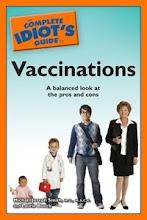I am slightly obsessed with the topic of radiation exposure, since I have covered radiation overdoses from CT scans on this blog and written about radiation issues in post-earthquake Japan and treating radiation injuries for Medscape. So I was interested to learn about efforts to decrease radiation exposure in patients when I stopped by the Society of Interventional Radiology's annual meeting in San Francisco last week.
Interventional radiologists (IRs) perform many minimally-invasive procedures, such as placing stents in arteries to increase blood flow or delivering targeted chemotherapy to a tumor. These procedures can often replace more invasive and riskier open surgeries. But the flip side of this medical progress is that some of the imaging technologies used to guide these procedures, specifically CT scans and X-rays, expose patients to ionizing radiation, the type of radiation that can harm DNA.
A poster at the session explained that CT scans are a key source of radiation exposure in the U.S. This exposure can be decreased by adjusting the CT scanner and basing the dose on the patient's BMI, explained author J. Collins et al. ("A Practical Guide to CT Dosimetry for the Interventional Radiologist").
Another intriguing development covered at the conference: the use of angioplasty (widening a narrowed blood vessel) to treat multiple sclerosis. Angioplasty can clear blockages in veins that might contribute to MS symptoms. Some patients who were studied reported that their symptoms improved after the procedure. The course of MS can be so fickle, though, that it's hard to tell whether symptoms improved or the disease simply relapsed for a while, reporter Laird Harrison explained in a WebMD article on the topic ("Treating Clogged Veins Improves MS, Study Says"). The press release about the procedure from the Society of Interventional Radiology is available online.
Showing posts with label radiation. Show all posts
Showing posts with label radiation. Show all posts
Monday, April 2, 2012
Monday, March 21, 2011
Japan and America, Post-Quake
I'm not a morning person, but on Friday, March 11 I woke up fast when I heard the news announcer on the clock radio say something about a 9.0 earthquake in Japan, and a tsunami afterward, heading for the West coast where I live. The tsunami arrived a few hours later, around 8:00 a.m. PST, smashing boats together in Santa Cruz.
Since then, I've been following the news out of Japan as closely as I can, both because I've been writing about it for work and because I live in California. First, there were fears of another major earthquake on the West coast, at the other end of the Pacific plate. Then the worries shifted to the damaged Fukushima Daiichi nuclear reactors in Japan that were leaking radioactive materials, a scenario made more vivid by a somewhat misleading New York Times forecast of the jet stream whipping its way east from Japan. Stories about panicked Americans buying potassium iodide began to pop up in the media.
There's a certain myopia at work here, though. With Japan 5,000 miles away, for example, the radiation risk to the West coast is minimal. People in Japan are obviously much, much closer to the source. Furthermore, some of the daily aftershocks in Japan are bigger than some of the big earthquakes we've had out here, such as the Loma Prieta quake in 1989, a 6.9 on the Richter scale. Our troubles are small in comparison to Japan.
I worry about natural (and manmade) disasters as much as the next person. I've got my earthquake kit - I put it together long ago - and water bottles stashed around the house. But right now it's Japan that needs our help, and whose problems loom the largest.
Since then, I've been following the news out of Japan as closely as I can, both because I've been writing about it for work and because I live in California. First, there were fears of another major earthquake on the West coast, at the other end of the Pacific plate. Then the worries shifted to the damaged Fukushima Daiichi nuclear reactors in Japan that were leaking radioactive materials, a scenario made more vivid by a somewhat misleading New York Times forecast of the jet stream whipping its way east from Japan. Stories about panicked Americans buying potassium iodide began to pop up in the media.
There's a certain myopia at work here, though. With Japan 5,000 miles away, for example, the radiation risk to the West coast is minimal. People in Japan are obviously much, much closer to the source. Furthermore, some of the daily aftershocks in Japan are bigger than some of the big earthquakes we've had out here, such as the Loma Prieta quake in 1989, a 6.9 on the Richter scale. Our troubles are small in comparison to Japan.
I worry about natural (and manmade) disasters as much as the next person. I've got my earthquake kit - I put it together long ago - and water bottles stashed around the house. But right now it's Japan that needs our help, and whose problems loom the largest.
Thursday, August 5, 2010
Adults and Kids Harmed by CT Scans
Radiation overdoses in both adults and children from computed tomography (CT) scans have lead to a lot of worry and finger-pointing in the news recently.
The issue was uncovered in a New York Times investigation by Walt Bogdanich of patients who experienced strange side effects after receiving CT scans to measure blood flow to their brain. CT scanners take a series of X-rays to create three-dimensional images of the body.
Bogdanich reported that over 400 patients at hospitals in California, Alabama, and Florida received as much as 13 times the recommended radiation doses from CT scanners. After the scans, the patients developed symptoms such as hair loss, confusion, and memory loss, and might now be at increased risk of developing cancer and brain damage.
Most of the scanners in question were made by GE Healthcare, Bogdanich reported. Hospital staff blame the overdoses on faulty training about how to use a new feature of the CT scanners designed to reduce the radiation dose. They say that a glitch in the scanners' software unintentionally lead to radiation overdoses. GE Healthcare, on the other hand, blames the hospital staff for misusing and misunderstanding this feature, and for not tracking the radiation doses more carefully for each patient.
The FDA had been investigating this issue over the past year, but "was unaware of the magnitude of those overdoses until The Times brought them to the agency's attention," Bogdanich wrote.
Meanwhile, Chicago Tribune reporter Judith Graham wrote that many children are receiving unnecessary adult-sized doses of radiation when they get CT scans. Because children often receive CT scans at hospitals for adults, the radiation doses are not always adjusted for the child's weight and size.
The issue was uncovered in a New York Times investigation by Walt Bogdanich of patients who experienced strange side effects after receiving CT scans to measure blood flow to their brain. CT scanners take a series of X-rays to create three-dimensional images of the body.
Bogdanich reported that over 400 patients at hospitals in California, Alabama, and Florida received as much as 13 times the recommended radiation doses from CT scanners. After the scans, the patients developed symptoms such as hair loss, confusion, and memory loss, and might now be at increased risk of developing cancer and brain damage.
Most of the scanners in question were made by GE Healthcare, Bogdanich reported. Hospital staff blame the overdoses on faulty training about how to use a new feature of the CT scanners designed to reduce the radiation dose. They say that a glitch in the scanners' software unintentionally lead to radiation overdoses. GE Healthcare, on the other hand, blames the hospital staff for misusing and misunderstanding this feature, and for not tracking the radiation doses more carefully for each patient.
The FDA had been investigating this issue over the past year, but "was unaware of the magnitude of those overdoses until The Times brought them to the agency's attention," Bogdanich wrote.
Meanwhile, Chicago Tribune reporter Judith Graham wrote that many children are receiving unnecessary adult-sized doses of radiation when they get CT scans. Because children often receive CT scans at hospitals for adults, the radiation doses are not always adjusted for the child's weight and size.
Subscribe to:
Posts (Atom)



